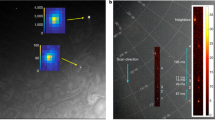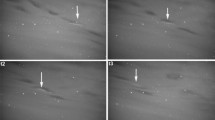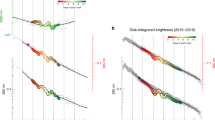Abstract
ON Sunday evening, (Nov. 3), at 5.30, a magnificent “bolide” was observed at Glasgow, shooting athwart the sky. It made its first appearance in the Constellation Auriga (about 10° to the left of Capella); from thence it glided slowly across the sky, shining with a brilliant green light, and exhibiting a pearshaped disc of one-third of the apparent diameter of the full moon. When it had arrived at the middle of its path (being almost due north), its velocity abated, and its colour changed to a whitish-blue. The meteor, accompanied by a diminutive red tail, and followed by a train of sparks, then regained its original velocity, and gradually approaching the horizon, eventually disappeared behind a cloud lying parallel, and close to the horizon in the N.N.W. The whole time occupied during its flight being 2.5′. In my letter reporting the auroral display of Nov. 10 last year, I suggested the application of Photography to the solution of auroral problems; might I venture to ask if any of your photographic correspondents have been able, during the displays of this year, to prove the possibility of taking auroral photos? I think the results would be interesting to most of your readers.
This is a preview of subscription content, access via your institution
Access options
Subscribe to this journal
Receive 51 print issues and online access
$199.00 per year
only $3.90 per issue
Buy this article
- Purchase on Springer Link
- Instant access to full article PDF
Prices may be subject to local taxes which are calculated during checkout
Similar content being viewed by others
Author information
Authors and Affiliations
Rights and permissions
About this article
Cite this article
McCLURE, R. Brilliant Meteors. Nature 7, 28–29 (1872). https://doi.org/10.1038/007028c0
Issue Date:
DOI: https://doi.org/10.1038/007028c0
Comments
By submitting a comment you agree to abide by our Terms and Community Guidelines. If you find something abusive or that does not comply with our terms or guidelines please flag it as inappropriate.



